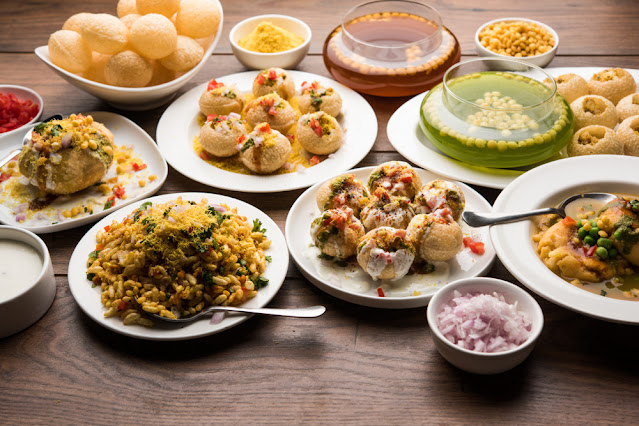Busting Myths About Indian Food and Dishes
The spread
and growth of Indian cuisine in the world are surprising. More and more Indian
restaurants are opening up in the USA, Europe, Australia, etc. As more people
are shifting from unhealthy dishes to meals cooked using only organic Indian
ingredients. The organic Indian food export rate has grown enormously over the
years and the shift towards a healthier lifestyle is visible all over the
world. The demand for organic, healthy, and authentic Indian food has increased
thus resulting in various Indian food chains expanding their territories.
There is a
huge growth in the numbers of Indian hotels in Berlin, Germany too. One such Indian
restaurant that is winning hearts with its pure vegetarian menu and delicious
South Indian course, is Dosa and More in Berlin. Indian food is famous for its
texture, the herbs and spices used, its aroma, and the lip smacking taste.
There is a huge variety of dishes in Indian cuisines. The variations in these
dishes according to the state they are being served in make the Indian cuisine
even more tempting and mysterious. Each Indian dish has a unique set of
ingredients, cooked in a different way to get a distinctive taste and aroma.
Even with a
huge number of people accepting and knowing about Indian cuisine, there are
many misconceptions and myths that revolve around this art of culinary. Indian
food is salty, sour, spicy, mild as well as sweet. The complexity and the time
is taken in creating these dishes ensure that the one consuming them is able to
enjoy the aroma and taste of each ingredient along with obtaining maximum
health benefits. Enjoy true Indian dishes at the top Indian restaurant in Berlin, Dosa and More.
Authentic Indian meals are created from scratch using fresh vegetables and finely grounded or coarse spices and herbs. The main advantage of having dishes from Indian cuisine is that they are cooked before serving. The boiling and cooking of ingredients over heat kills bacteria and ensures that the maximum use of nutrients of the ingredients is done.
Here are
some myths and facts about Indian cuisine that everyone must be aware of:
1. Each Indian dish is spicy: Indians have
created dishes containing all flavours, from a spicy chutney to sweet halwa.
The spices added to these dishes decide the spiciness of the meal and can be
adjusted according to taste. Not all Indian dishes are tangy and zingy. The
spices blend together to form a balance of tastes, while one can be enhanced by
using specific herbs in distinctive quantities.
2. Indian food is time-consuming: Many
people avoid visiting Indian restaurants because Indian food is cooked and the
process can be time-consuming. This is not correct! Some healthy delicious
dishes like South Indian Dosa, roti, dry vegetable sabzi like
Capsicum potato, etc are very quick to cook along with desserts like suji ka
halwa, etc.
3. Indian dishes are heavy: There are many
Indian dishes that are included in the dietary plans of athletes as they are
light, rich in nutrients, and very filling.
This is a very common myth amongst unaware people that Indian dishes are
high in calories and very heavy for the stomach. If cooked properly with an apt
amount of spices, the Indian cuisine has dishes that can be consumed regularly
as a full-fledged meal or even as a healthy evening snack.
4. Indian food is unhealthy: Many consider
the cooking of Indian dishes in ghee or oil as unhealthy because dried or boiled
food has been promoted as healthy food for many years. This myth needs to be
taken care of immediately as the use of ghee in cooking does not make the food
heavy, unhealthy or fatty at all. The ghee used to cook Indian dishes is
obtained naturally and is organic. The use of organic ghee while cooking makes
the dish tastier, healthier and is one of the oldest cooking ingredients in the
history of Indian cuisine.
5. Indian cuisine is all about curries:
While the curry is one of the most important components of the Indian dishes,
the dry vegetable dish is equally famous and loved. The most commonly used
vegetable in the dry dish in India is potato. Potato cooked in spices along
with other vegetables or one vegetable is also a very famous meal of the Indian
cuisine. This dry vegetable dish or sabzi is eaten with flatbread like roti or
naan.
6. Indian dishes are too sweet: The idea
of having sweet after dinner is a common practice in India. One of the most
consumed post-dinner desserts in India is Indian Gur. This piece of dessert is
hand-created using true and authentic ingredients and is indeed very healthy.
The sweetness of most Indian dishes can be adjusted according to taste and wish
thus making this statement a myth.


Comments
Post a Comment